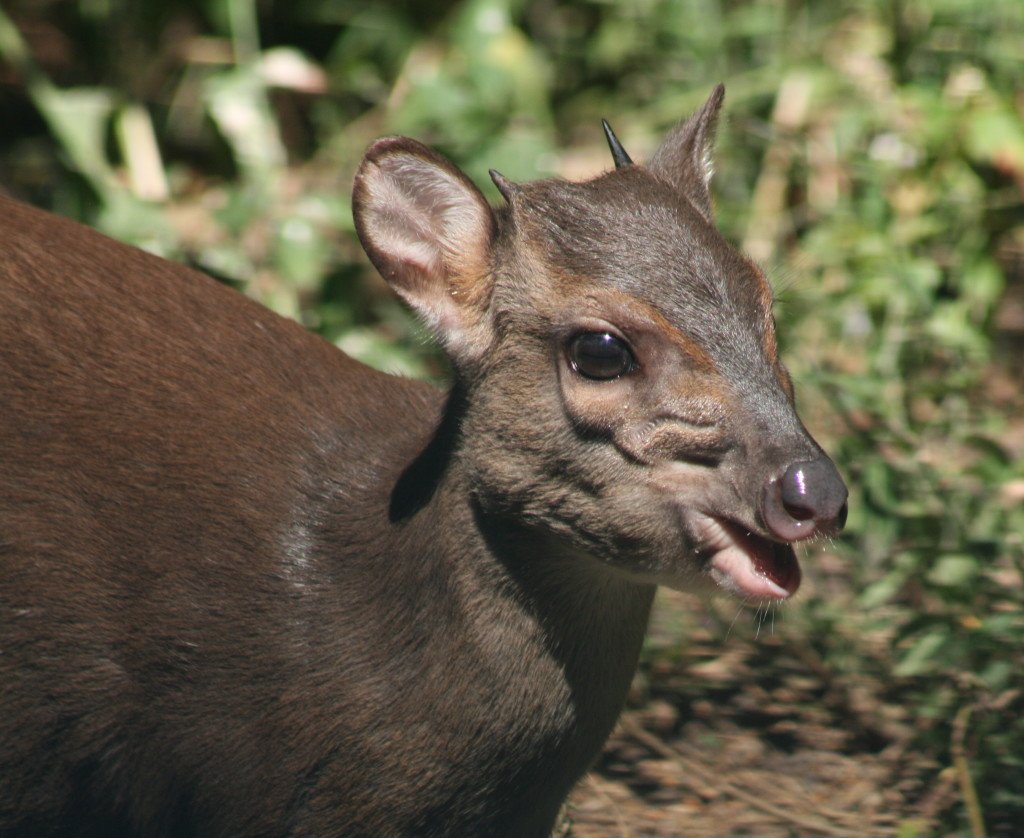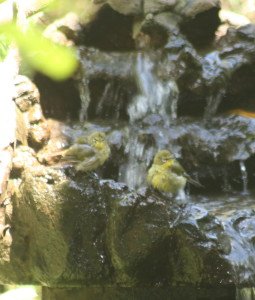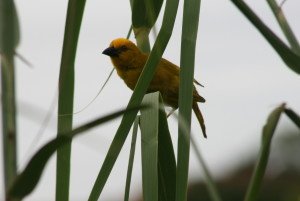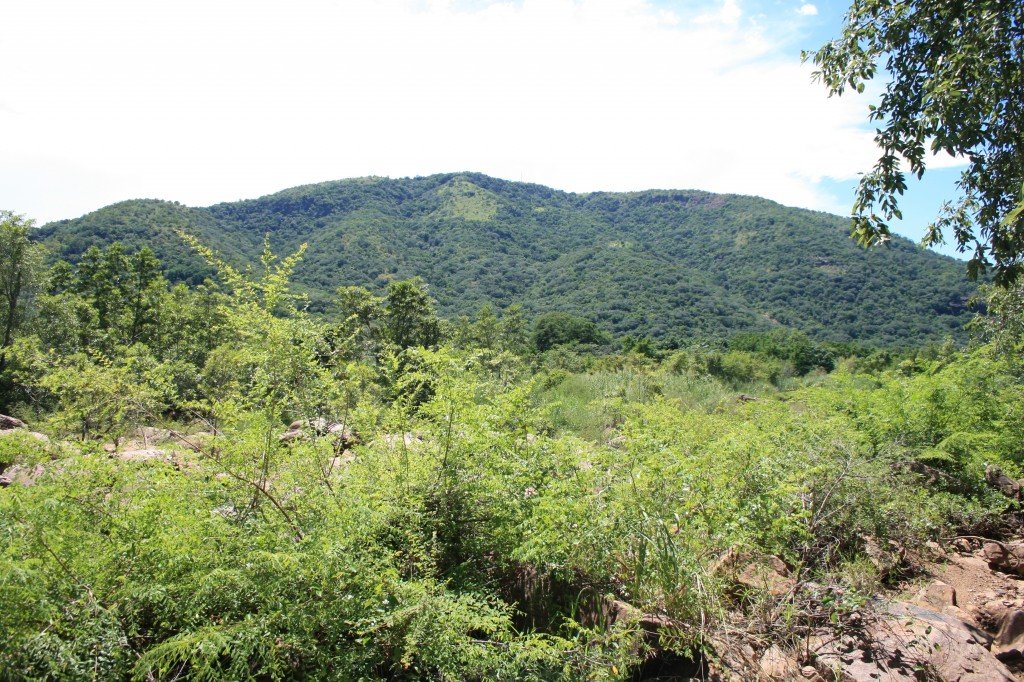
Lush tropical growth along the Mbuluzi River, with the hills of Mozambique in the background, makes for thrilling birding
Timing is everything in birding and so much of that is just down to sheer luck. A second or two can mean the difference between making that great sighting as a rare bird flies into a tree or missing it entirely as you move on to the next bush.
I was reminded of this in quite forceful fashion on my trip to Mlawula Nature Reserve, a dramatic venue in the foothills of the Lebombo Mountains, nestled in the north-eastern corner of Swaziland, right on the Mozambique border.
There’s a large, rustic campsite on the Simunye side of the reserve and, with a spacious lawn and plenty of trees, it’s a productive place to walk around in terms of birding.
And so it was that on a typically steamy Lowveld afternoon I was walking around the campsite and enjoying the shade of the trees. When my wife phoned!
Obviously I am always delighted to hear from the very special person who agreed to marry me, but some times are better than others.
Anyway, I’m not one of those people who tend to walk around while talking on the phone, so I stood still and took the call.
And I’m glad I did because the call ended and I was just putting my cellphone back in my pocket when I noticed something large fly into the Milkwood tree in front of me.
It was unmistakably raptorish, but fairly short and squat and lots of white was visible.
Closer inspection revealed a pale form Wahlberg’s Eagle – the one with the lovely white head and brown wings. It was only after a few seconds that I noticed the handsome bird was holding something in its powerful yellow claws – an unfortunate young Rock Monitor was going to be supper.

A Wahlberg's Eagle ... with it's unfortunate Rock Monitor supper
The eagle hung around for quite some time, producing a memorable highlight of the second day in Mlawula.
I had awoken that day – my first morning there – to the liquid purity of the Blackheaded Oriole regaling the dawn with it’s perfectly pure notes. Along with the Gorgeous Bush Shrike whistling away and the Yellowspotted Nicator chuckling in the dense bush, and the Greyheaded Bush Shrike providing a mournful contrast, it was impossible not to feel excited about being in this exotic wilderness.
Everything was very skittish though, suggesting there was hunting there in the past and that poaching may still be a problem.
The moist savanna between the entrance gate and the camp featured typical lowveld birds: there were lots of Redbacked Shrike, swooping on their insect prey like little masked superheroes, plenty of African Hoopoe and other interesting sightings such as Crowned Hornbill, Paradise Flycatcher, Woodland Kingfisher, Plumcoloured Starling and Purplecrested Lourie.
Feeling adventurous (and hoping for Black Coucal which has been seen in the area before), I tackled the track along the Mbuluzi River towards the Mozambique border. Now you really felt as if you were in the tropics, with stifling heat and thick bush hemming you in, and eventually I could proceed no further as the road had been washed away, leaving a pile of unpassable boulders.
The third day brought a contrast as I travelled south and up into the hills where Magadzavane Lodge nestles with a commanding view; a place of great potential. From the valleys which are just over 150m above sea-level, you climb to an altitude of over 550m.
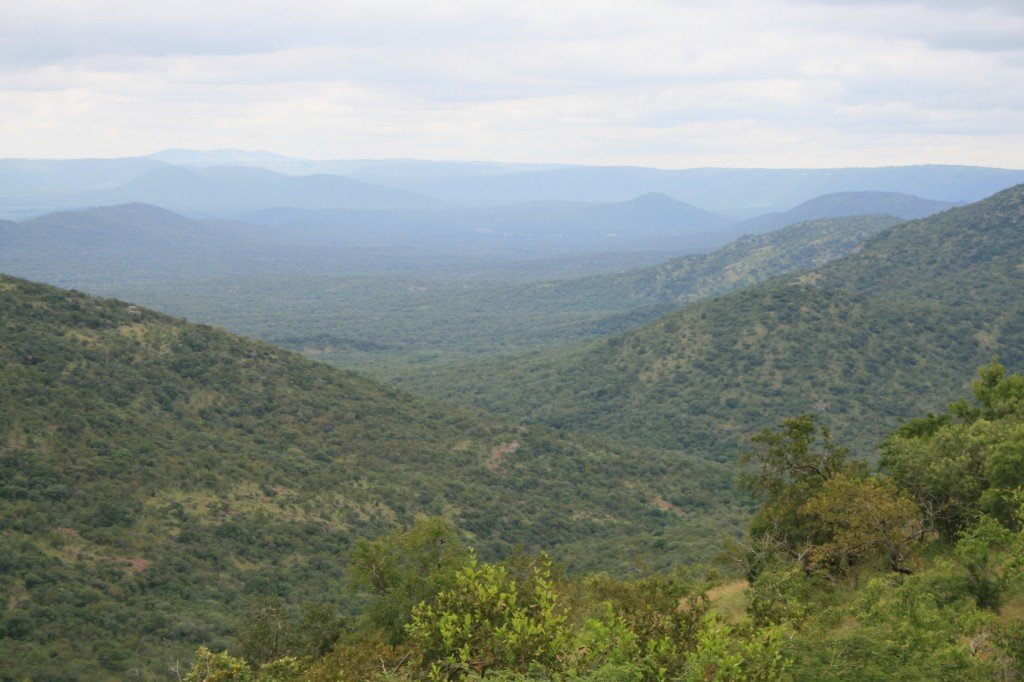
The view from Magadzavane Lodge, looking out over the Swaziland lowveld
Along the way, Bearded Woodpecker was spotted along with the more common Goldentailed, while Whitebacked Vulture added to the raptor list.
As another example of fortuitous timing, as I stopped to take a photograph of the magnificent view of hills and valleys stretched out below me, what should fly almost directly beneath me but a beautiful Crowned Eagle. It was soon joined in its majestic drifting by a Brown Snake Eagle.
A European Marsh Warbler – one of the few non-aquatic Acrocephalus species – was foraging in the clumps of bush in the grassland on the other side of the road.
But just to prove that intuition also plays a role in birding success, once back at camp I was aware of several birds making a helluva racket close to the ablution block. Going to investigate paid off as there was a young Southern African Python trying to stealthily make its way across the lawn.
A drive to the Mbuzi Picnic Site and the Mlawula River in the late afternoon brought the wonderful Longtailed Paradise Whydah, Black Widowfinch and Blackchested Snake Eagle, as well as a Fierynecked Nightjar on the way back as evening fell on the African wilderness.
The moist bushveld, with lovely tall Fever Trees along the Siphiso River, close to camp looked a good spot for birding and spending a couple of hours on the final morning there brought Yellowthroated Sparrow, White Helmetshrike, African Fish Eagle and Pied Kingfisher.
The camping facilities at Mlawula are rustic and, this deep in the African bush, things do go wrong. Baboons dug up the water pipes early on the second morning, leaving me without any water to shower or wash up. Fortunately I had a two-litre bottle of water with me for cooking and drinking, but I had to resort to bush-toilets.
Of course the bushveld also provides and dirty plates were sorted out by putting them on the ground and, 30 seconds later, a swarm of ants would be busy picking them clean.
Going with the flow can also be a wonderful experience!
Sightings list
Blackeyed Bulbul
African Hoopoe
Nyala
Impala
Emeraldspotted Wood Dove
Crowned Hornbill
Redbacked Shrike
European Swallow
European Bee-Eater
Spotted Flycatcher
Wahlberg’s Epauletted Fruit Bat
Blackheaded Oriole
Paradise Flycatcher
Greyheaded Bush Shrike
Hamerkop
Blue Waxbill
Glossy Starling
Rattling Cisticola
African Pied Wagtail
Common Sandpiper
Warthog
Southern Black Flycatcher
Speckled Mousebird
Woodland Kingfisher
Plumcoloured Starling
Chacma Baboon
Purplecrested Lourie
Whitebellied Sunbird
Lesser Striped Swallow
Wiretailed Swallow
Yellowfronted Canary
Cape White-Eye
Blackcollared Barbet
Goldenbreasted Bunting
Forktailed Drongo
Little Swift
Wahlberg’s Eagle
Rock Monitor
Chinspot Batis
Redeyed Dove
Southern Boubou
Wahlberg’s Velvet Gecko
Brownhooded Kingfisher
Jameson’s Firefinch
Goldentailed Woodpecker
Bearded Woodpecker
Leopard Tortoise
Whitebacked Vulture
Burchell’s Coucal
Longbilled Crombec
Sombre Bulbul
Blackbacked Puffback
Striped Skink
Five-Lined Skink
European Marsh Warbler
Crowned Eagle
Brown Snake Eagle
Common Waxbill
Greater Kudu
Southern African Python
Longtailed Paradise Whydah
Black Widowfinch
Southern Greyheaded Sparrow
Arrowmarked Babbler
Greenbacked Camaroptera
Terrestrial Bulbul
Natal Francolin
Blackchested Snake Eagle
Plains Zebra
Fierynecked Nightjar
Yellowthroated Sparrow
White Helmetshrike
African Fish Eagle
Pied Kingfisher

There is a large mammal in this photograph? Can you name it & point out where it is?
